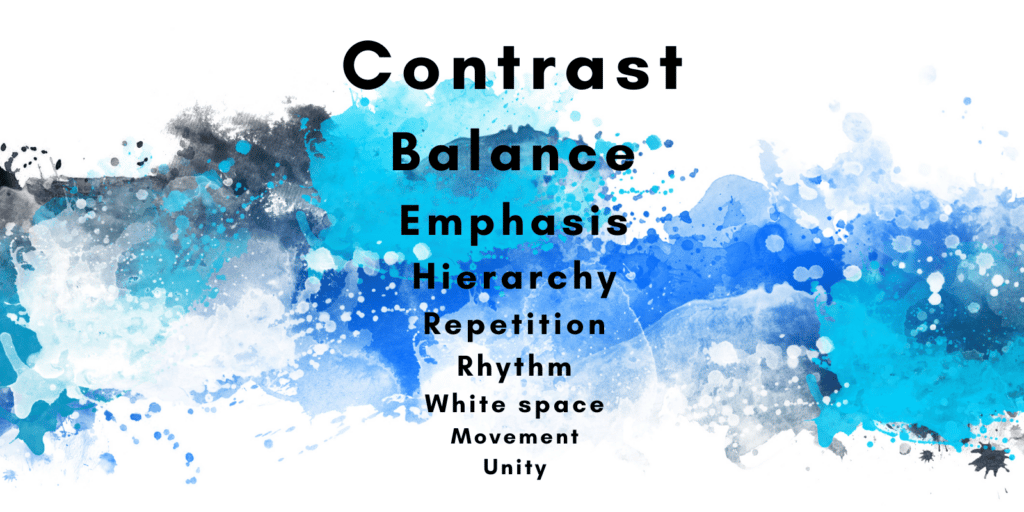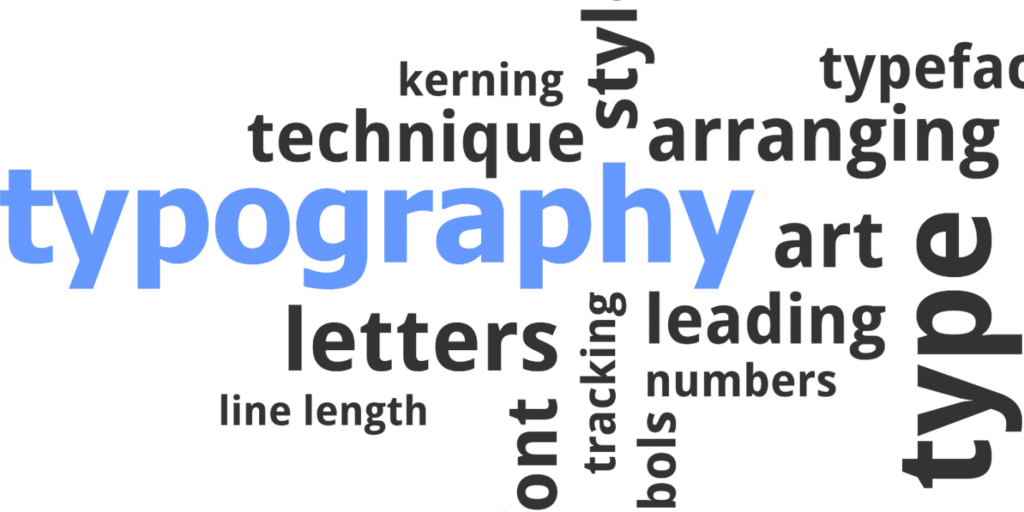Many think that being a successful graphic designer simply requires a solid understanding of the Adobe Creative Cloud. While this is a very important component to a career in graphic design, today’s graphic designer needs a unique blend of creativity and technical expertise to be competitive in the field. Siba’s Graphic Design Department Chair, Susan Stuart, emphasizes to her students that designers need to bring a dynamic approach to their work, from crafting visually stunning designs to communicating with clients and team members. Here are her insights and tips for building the skills needed to succeed as a graphic designer:
Mastering the Principles of Graphic Design.
Knowledge that sets formally-trained graphic designers apart is a thorough understanding of the basic principles of graphic design: contrast, balance, emphasis, hierarchy, repetition, rhythm, white space, movement, and unity. These principles guide the arrangement and structure of design elements. The way these principles are used affects the overall message and feel of a particular design. A good design is one that is functional and makes the end design useful and organized.

- Contrast refers to the use of different elements in a design to create visual interest and hierarchy. By using contrasting colors, shapes, and textures, designers can draw attention to specific areas of a design.
- Balance refers to the distribution of visual weight within a design. A balanced design feels stable and harmonious, while an imbalanced design feels unstable and jarring.
- Emphasis is the focal point of a design; it’s the element that catches the viewer’s eye first. It’s used to draw attention to the most important information in a design.
- Hierarchy is the organization of elements in a design that establishes a visual order and guides the viewer’s eye through the design. It’s used to communicate the relative importance of different elements in a design.
- Repetition refers to the use of similar elements throughout a design. It creates a sense of unity and consistency, making a design feels cohesive and organized.
- Rhythm refers to the movement and flow of a design. It’s created by repeating elements, such as shapes, colors, and patterns, in a consistent and organized way.
- White space/negative space is the area around and between the elements in a design. This essential element in graphic design helps to create a sense of balance, hierarchy, and emphasis.
- Movement refers to the way that the viewer’s eye moves through a design with the use of lines, shapes, and color to guide the eye through the design.
- Unity refers to the sense of togetherness and harmony in a design. It’s achieved by using the principles above in a cohesive way.
By understanding and applying these principles, graphic designers can create designs that are visually pleasing, effective, and impactful.
Communication.
According to Stuart, graphic designers need to produce, defend, and adjust their ideas for clients in both a visual and verbal way. The ability to listen carefully to the client’s needs, ask lots of questions to fine-tune and clarify ideas, and provide feedback by explaining design elements—without getting technical—will give any designer a huge advantage.
Further, good communication between the client and designer establishes trust and helps build a positive working relationship so that revisions and changes are clearly understood and the final product meets the client’s expectations. It is also important for designers to be able to communicate the reasoning behind their design choices, as this helps clients to understand the thought process and strategy behind the concept.

Typography.
Stuart also explains why a strong understanding of typography is an essential skill in the graphic design field: “While fonts are downloadable everywhere, being able to use the appropriate font to communicate the client’s particular message while being visually appealing (and readable) is an important element of any design.”
The successful use of typography can have a significant impact on the overall look and feel of a design, and it can be used to convey a specific message or emotion. Good typography can help to make text easy to read and understand, and it can also be used to create a hierarchy of information, making it clear to the viewer which elements are most important. Additionally, typography can be used to create visual interest and add a unique and personal touch to a design. It can also be used to make a design stand out and to make it memorable.
Interactive Media.
Stuart advises her students to learn about as many different types of media as possible. “Design is much more than print media. It is also understanding and being able to work with interactive media or motion graphics using text, animation, video and audio messages.”
By understanding how these different mediums work and how users interact with them, designers can create more effective and user-centered designs. Interactive media can provide new opportunities for designers to showcase their skills and creativity in ways that traditional print media cannot. It is an essential skill for staying competitive and relevant in the graphic design industry.
Web Design and a “working knowledge” of coding.
While aspiring graphic designers should know the fundamentals of web design and web flow, they don’t necessarily need to be an expert at coding. Designers with a basic understanding of HTML, styles, and/ or JavaScript will have the tools they need to make it in the field.

Knowing how to code allows designers to create and manipulate website designs, build responsive and interactive layouts, and optimize websites for search engines. It also enables designers to communicate effectively with developers and other team members, so that the final product meets the client’s expectations.
Siba’s graphic design curriculum aims to give students ample opportunity to learn about all of these distinct skill areas as they progress through the A.A.S. and B.A. Graphic Design programs. Well before they complete their degree, Siba students start building their portfolios and have ample opportunities to interact with professionals in the industry. These experiences help them polish their skill sets, fine-tune their individual career goals, and give them the confidence to enter the world of professional graphic design.
Call today to find out more about our accelerated graphic design program in St. Louis, Missouri!
